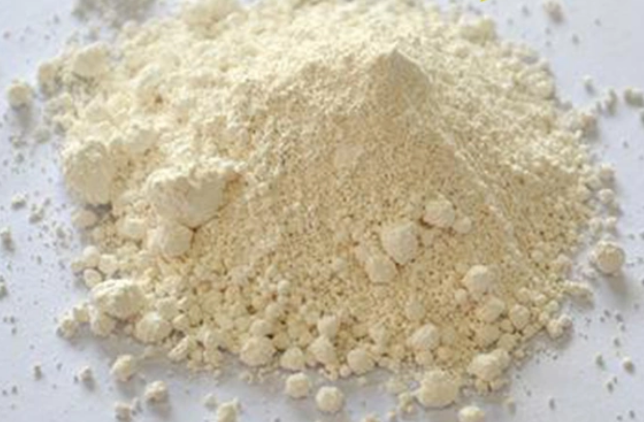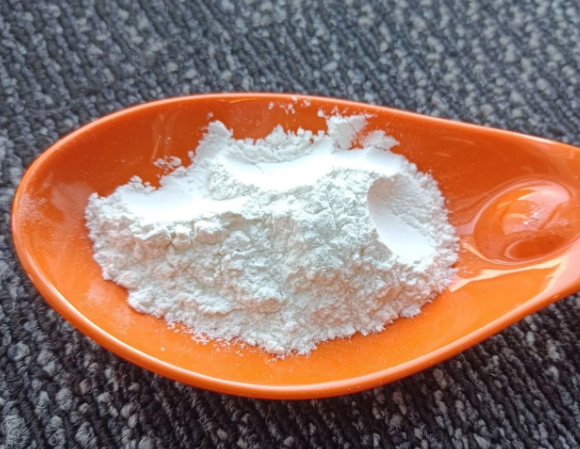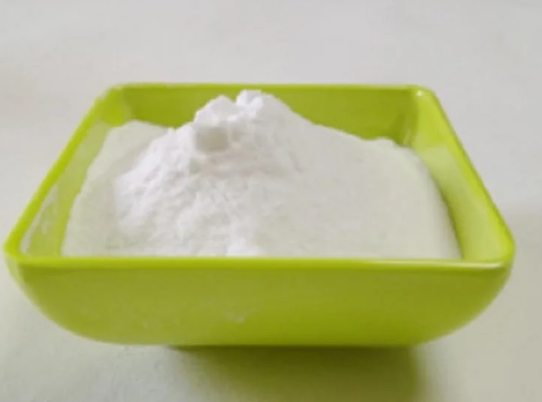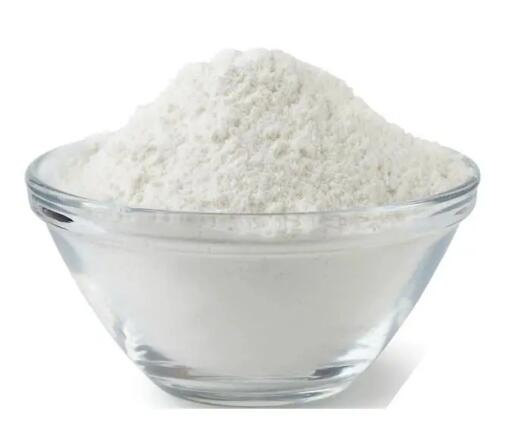-

3-Aminophthalhydrazide CAS:521-31-3
3-Aminophthalhydrazide is a chemical compound with the molecular formula C8H8N2O. It is referred to as an aminohydrazide derivative of phthalic acid. This compound consists of a phthalic acid backbone with two hydrogen atoms replaced by an amino group and a hydrazine group.
3-Aminophthalhydrazide has various applications in the field of organic chemistry and medicine. It can be used as a starting material in the synthesis of various pharmaceutical compounds and dyes. Additionally, it is often employed in the preparation of Schiff bases, which are important intermediates in organic synthesis.
-

4-Aminoantipyrine CAS:83-07-8
4-Aminoantipyrine, also known as aminoantipyrine or aminopyrine, is a synthetic organic compound. It is commonly used as a reagent in analytical chemistry and pharmaceutical industry. Its chemical structure consists of an aromatic ring with an amino group (NH2) and a pyrazolone group, making it a versatile compound for various applications.
In analytical chemistry, 4-Aminoantipyrine is widely used as a chromogenic reagent in colorimetric assays. It reacts with certain substances, such as phenols and peroxides, to form colored complexes that can be measured spectrophotometrically. This property makes it useful in various assays, including the determination of enzymes like peroxidase, glucose, and amylase.
In the pharmaceutical industry, 4-Aminoantipyrine has been used historically as an analgesic and antipyretic drug .
-

TAPS-NA CAS:91000-53-2 Manufacturer Price
N-[Tris(hydroxymethyl)methyl]-3-aminopropanesulfonic acid sodium salt, also known as TAPS-Na, is a chemical compound commonly used as a buffering agent in various biological and biochemical applications. It is a zwitterionic compound, meaning it has both positive and negative charges, which helps maintain a stable pH in solutions.
TAPS-Na has a pH range of approximately 7.7 to 9.1, making it suitable for applications requiring a slightly alkaline pH environment. It is often used in protein and enzyme research, as well as in molecular biology techniques such as gel electrophoresis and DNA sequencing.
As a sodium salt, TAPS-Na is highly soluble in water, which allows for easy preparation of buffered solutions. It is known for its low toxicity and minimal interference with biological molecules, making it a preferred choice for many experiments.
-

5,5-Dithiobis(2-nitrobenzoic acid) CAS:69-78-3
5,5-Dithiobis(2-nitrobenzoic acid), also known as DTNB or Ellman’s reagent, is a chemical compound commonly used in biochemical and pharmaceutical research. It is a yellow, crystalline powder that is highly soluble in water and organic solvents.
DTNB is primarily used to measure the concentration of sulfhydryl (-SH) groups in proteins and peptides. The compound reacts with thiols, resulting in the formation of a mixed disulfide and releasing 2-nitro-5-thiobenzoate, which has a yellow color that can be measured spectrophotometrically. By quantifying the intensity of the yellow color, it is possible to estimate the concentration of thiols in a sample. This technique is often used to study protein-protein interactions, protein folding, and enzymatic reactions that involve thiol groups.
In addition to thiol quantification, DTNB has been employed in other applications, such as evaluating the redox state of cells, studying the stability of metal-sulfur compounds, and measuring the activity of various enzymes.
-

PHENOLPHTHALEIN MONOPHOSPHATE BIS(CYCLOHEXYLAMMONIUM) SALT CAS:14815-59-9
Phenolphthalein monophosphate dicyclohexylammonium salt is a chemical compound that is derived from phenolphthalein, a pH indicator commonly used in laboratory settings. The dicyclohexylammonium salt form of phenolphthalein monophosphate is often used as an analytical reagent in biochemical and molecular biology research. It is primarily used in experiments or assays to detect and measure the presence of certain enzymes, including those involved in ATP (adenosine triphosphate) hydrolysis or phosphatase activities. Its unique properties make it a useful tool in scientific investigations related to enzyme kinetics and cellular processes.
-

NSP-SA-NHS CAS:199293-83-9 Manufacturer Price
NSP-SA-NHS is a compound consisting of N-succinimidyl-6-(3′-pyridyldithio)hexanoate (NSP) and N-hydroxysuccinimide (NHS). It is commonly used as a crosslinking agent in bioconjugation reactions, specifically for coupling peptides, proteins, or other amine-containing molecules to surfaces or other molecules. The NSP moiety enables the formation of a stable thioester bond with the target molecule, while the NHS moiety allows for subsequent reaction with primary amines. NSP-SA-NHS is widely employed in various research and biomedical applications, including the preparation of immunoassays, antibody labeling, protein-protein interactions studies, and protein immobilization.
-

N-(1-Naphthyl)-3-aminopropanesulfonic Acid Sodium Salt CAS:104484-71-1
pH Indicator: The compound exhibits pH-dependent color changes, making it a useful pH indicator in various assays and experiments. It can be employed to monitor pH changes in biological samples, chemical reactions, and other systems.
Fluorescent Probe: N-(1-Naphthyl)-3-aminopropanesulfonic acid sodium salt possesses inherent fluorescence properties, making it suitable for fluorescence-based studies and labeling applications. It can be incorporated into analytical techniques for visualizing and tracking biological molecules or cellular structures.
Enzyme Assays: This compound is often used as a substrate or inhibitor in enzyme assays, especially those involving sulfonate groups or enzyme activity influenced by pH changes. It can help researchers study enzyme kinetics, inhibition mechanisms, and enzyme-substrate interactions.
Buffer Component: N-(1-Naphthyl)-3-aminopropanesulfonic acid sodium salt can be employed as a component of specific buffer systems, particularly those requiring a sulfonic acid group or certain pH ranges. It contributes to maintaining optimal pH conditions in experimental setups.
Chemical Synthesis: Due to its unique chemical structure, N-(1-Naphthyl)-3-aminopropanesulfonic acid sodium salt can serve as a building block or starting material for synthesizing various organic molecules or pharmaceutical compounds.
-

N-(2-Acetamide)iminodiacetic acid CAS:26239-55-4
N-(2-Acetamido)iminodiacetic acid is a compound that belongs to the class of amino acids known as chelating agents. It is commonly used as a complexing agent, particularly in medical and industrial applications. The compound has excellent metal chelating properties, meaning it can form stable complexes with various metal ions by coordinating to them through its functional groups.
-

Disodium 4-nitrophenylphosphate CAS:4264-83-9
Disodium 4-nitrophenylphosphate is a chemical compound with the molecular formula C6H4NO6PNa2. It is a fine crystalline powder that is typically used in biological research and molecular biology applications. It is often utilized as a substrate in enzyme assays, particularly for phosphatase enzymes. This compound is known to undergo hydrolysis in aqueous solutions, resulting in the release of the free phosphate ion.
-

6-methoxyquinoline CAS:5263-87-6
6-Methoxyquinoline is an organic compound with the molecular formula C10H9NO. It is a heterocyclic aromatic compound consisting of a quinoline ring fused with a methoxy group at the 6-position.
This compound has various applications in organic synthesis and medicinal chemistry. It can serve as a building block for the synthesis of other quinoline derivatives and related compounds.
In medicinal chemistry, 6-Methoxyquinoline has shown potential pharmacological activities. It has been studied for its antimicrobial, antimalarial, and anticancer properties.
-

4-Benzylamino-7-nitrobenz-2-oxa-1,3-diazole CAS:18378-20-6
4-Benzylamino-7-nitrobenz-2-oxa-1,3-diazole is a chemical compound with a molecular formula C14H11N5O3. It is a heterocyclic compound that contains a diazole ring fused with a benzene ring. This compound is known for its fluorescent properties and is often used as a fluorescent dye in biological research and imaging applications. The benzylamino group attached to the diazole ring enhances its solubility and stability. The nitro group and the oxa atom (oxygen) in the diazole ring contribute to its unique chemical and physical properties.
-

TAPSO CAS:68399-81-5 Manufacturer Price
TAPSO (3-[N-tris(hydroxymethyl)methyl]amino]-2-hydroxypropanesulfonic acid) is a zwitterionic buffer commonly used in biological and biochemical research. It is an efficient buffering agent with a pKa close to physiological pH, making it suitable for maintaining a stable pH in biological experiments. TAPSO is often utilized in protein purification, enzyme assays, cell culture, and electrophoresis applications. Its high water solubility and low interference with biological processes make it a popular choice in the scientific community. TAPSO is known for its minimal effect on enzyme activity and is often used as an alternative to other buffering agents like Tris or phosphate buffers.

